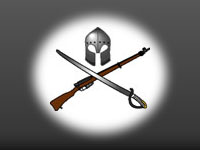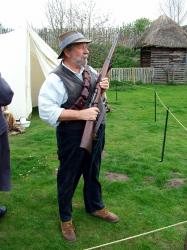Translate this Page
Anniversaries for today :
Welcome to Clash of Steel!
[ About us ]
[ Contribute a battle ]
[ Contribute a review ]
[ Contribute a reenactment group ]
[ Contact us ]
Featured battle : Vigo
Part of The French Revolutionary and Napoleonic Wars
Date : 27 March 1809
A somewhat unorthodox engagement. The French were a single battalion garrison plus a few hundred sick and wounded. The attackers were Spanish Irregulars [Guerillas] supported by and supplied with weapons from the British frigates H.M.Ss. Lively and Venus. The French surrendered on terms that they should become prisoners of the British. A large amount of military supplies and Soult's military chest containing over £6,000 were captured.
Featured image :
McDonnell F-101-B Voodoo 6-0312

Another iconic 1960's US fighter/interceptor which served with distinction in the photo-reconnaisance role into the 1980's. This example is painted in the 60th Fighter Interceptor Squadron USAF.
Gallery updated : 2022-04-04 08:33:43
Featured review :
Gurkha Odyssey
Peter Duffell
An odyssey is a long eventful journey and an appropriate title for this book. The story is of the author’s journey with and in the Gurkha ‘family’. The manner of its telling, in the main, is like a dinner party conversation with an excellent raconteur. In the telling not only do we see the Gurkhas but we see the author. Peter Duffell is a fighting man both with his men in the jungles of Borneo and for his men in the corridors of Whitehall. The period covered is from the early 1960s to 2018 with some coverage of early history. The unit focused on is the 2nd Gurkhas and therefore sadly does not include the Gurkha contribution to the Falklands war [7th Gurkhas].
The book is well illustrated with a dozen pages of colour plates and some super Ken Howard drawings. Nine maps, all with scales, help in the telling of the journey. There is more to Gurkha history than told here and this book is a taster which will leave you wanting to find out more.
Gurkha Odyssey is a most enjoyable cover to cover read which we highly recommend.
Pen & Sword Military, 2019
Reviewed : 2019-11-07 13:56:22






